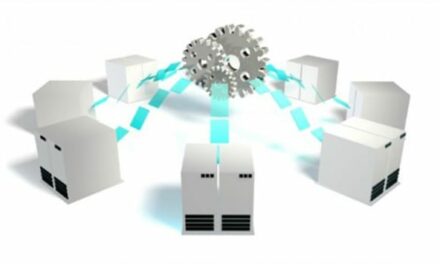Efficiency is a top goal for any HTM department—so it’s no surprise that tools to streamline operations, such as computerized maintenance management systems (CMMSs), are in high demand.
Below, four individuals in the CMMS space—Joseph Happ, MHA, executive vice president and chief information officer of Irvine, Calif.-based Renovo Solutions; Matthew Baretich, PE, PhD, president of Fort Collins, Colo.-based Baretich Engineering, Inc. and co-author of Computerized Maintenance Management Systems for Healthcare Technology Management(AAMI 2017); Rich Sable, CBET, product manager at Charlotte, N.C.-based EQ2, LLC; and Ben Mannisto, president of Southfield, Mich.-based Phoenix Data Systems—sit down with 24×7 Magazine to discuss what hospitals should look for when purchasing a CMMS and how this technology is changing the game for HTM departments.
24×7 Magazine: How does CMMS software benefit hospitals, and HTM departments, in particular?
Rich Sable: In numerous ways. Device uptime, maintenance records, meeting regulatory compliance requirements, cost avoidance, staff productivity, and communication with the C-suite are all dramatically improved. Many innovations in modern healthcare are enabled by new medical devices and their associated procedures, thereby reducing the length of stay and improving patient outcomes. And with better outcomes, healthcare organizations can improve their financial performance. To reap these benefits, devices must be available as much as possible—and the best way to increase uptime is to perform regular preventive maintenance.
The CMMS program should handle any medical device or software recall information, with the HTM manager using the CMMS to monitor adherence to the recall, as well as regulatory compliance. Plus, regulatory agencies such as the Joint Commission, DNV, and the Centers for Medicare & Medicaid Services mandate records for both preventive and corrective maintenance. With proper use of a good CMMS, HTM managers can increase equipment uptime, thus increasing both patient safety and satisfaction—along with the organization’s financial performance.
Matthew Baretich: A strong CMMS is essential for cost-effective HTM. The basic functions—equipment inventory, preventive maintenance scheduling, and maintenance history—are required for basic operation and standards compliance. Beyond the basics, a comprehensive CMMS that is appropriately configured gives HTM professionals the analytical tools they need to improve quality and reduce costs.
Joseph Happ: A properly implemented CMMS is a vital component of any HTM program. Success of our programs are evaluated on how well we manage inventory, service, finances, and regulatory compliance. Implementing a CMMS that links these four functions can dramatically increase program quality and effectiveness.
Ben Mannisto: A CMMS is not only a repository for all medical device information and data, it must track preventive maintenance and corrective maintenance work for compliance requirements, track all costs, and provide real-time reporting and analytics. Everything you need to know about medical devices should be in the CMMS and must be readily accessible, including compliance status, PM schedules, contracts, parts, alternative equipment maintenance program information, and more.
24×7: What key features should healthcare facilities consider when purchasing CMMS software?
Mannisto: More than individual key features, HTM departments should look at the CMMS provider’s ability to keep up with—or even ahead of—industry compliance mandates. HTM departments have evolved dramatically over the years—[with departments now responsible for managing] changes such as HIPAA, alternative equipment maintenance, Unique Device Identification, and 100% PM completion. Having a CMMS provider that meets these needs and can still provide key features/functions is critical.
Happ: Since managing risks to patient safety remains a core objective of HTM, managers should consider how their programs can manage and support software-based medical devices and systems. Implementing best practices and tools typically found in the IT discipline can greatly advance this effort. Incorporating full-featured systems management functionality within the CMMS to support effective configuration management, security management, and change management not only reduces effort for our staff, it also provides valuable support for our organization’s effort to manage cybersecurity risks.
Sable:[Here are six key considerations]:
- The CMMS software should be scalable to meet both your current and future demands of the system. For instance, a hospital might want to start out with only some maintenance management modules and basic reporting, but as its needs grow, it can select other features, such as ECRI recall management, AEM management, or other dashboards.
- The CMMS should interface with other information systems within your organization to meet your desired expectations.
- The CMMS should have robust reporting and management dashboards to demonstrate your department’s performance to leadership. Additionally, larger healthcare systems need to have reports and dashboards covering all the institutions within the enterprise.
- An effective CMMS provides a mobility solution for your staff, and this solution should handle both corrective and preventive maintenance; on-demand work orders, including prioritization and call escalation; inventory additions and parts ordering; reporting; and should work in both connected and unconnected modes from the hospital local access network (LAN)/wireless LAN. A mobile app should be available on different platforms like iOS (Apple), Android, and Windows phones and tablets, which then enable those corresponding device features of speech-to-text, barcode scanning, and photo-taking.
- The system should accommodate your desired workflow from end user to assigned technician. A call escalation feature ensures that your response time remains on track for each request.
- The CMMS should have built-in intelligence and data integrity tools to maintain standardization, along with the ability to track IT fields for cybersecurity.
Baretich: Essentially, all CMMS software can handle the basics. The best CMMS software excels in two ways: advanced analytical capabilities and the capacity to integrate with other software—from real-time location systems to supply chain and beyond.
24×7: What innovations in CMMS technologies should HTM professionals be on the lookout for in 2019?
Sable: In 2019, HTM professionals should expect to see CMMS applications interfacing with HTM-specific information systems to improve asset utilization and patient safety. An example is oneSOURCE Document Service for an up to date collection of service manuals and PM procedures. Also, these manuals should be accessible from mobile devices—so technicians can have this information at their fingertips when they’re in the field.
Another example is better cybersecurity management. With ZingBox technology, for instance, ZingBox scans the network for malicious activity and can flag [certain] devices in the equipment inventory, and the CMMS can then populate IT fields from the data retrieved. Another strong interface is with Glassbeam, which uses machine learning and can work across many vendors and modalities. With this interface, device problems can be detected early and trigger a work order before an instrument fails, thus minimizing downtime. Further, downtime statistics from the CMMS can be fed back to the Glassbeam dashboard, which provides the end user with key metrics and utilization reports.
Happ: Remote monitoring of networked medical devices is something we are [putting a lot of] effort into. The ability to integrate device-operational status and communication activity will provide early warning of an impending failure or breach, which could affect patient safety.
Baretich: Regarding analytical capabilities, support for alternative equipment maintenance programs is improving. There will be more and more integration between CMMS software and a wide range of other systems.
Mannisto: Augmented reality; smart equipment troubleshooting, coupled with smart repair parts purchasing; additional third-party application integrations; dynamic departmental analyses; and closer departmental budget monitoring.
24×7: What are some barriers to CMMS implementation? How is your company working to overcome them?
Happ: With cloud computing, software-as-a-service implementations are quick and easy today. However, data normalization administered via centralized repositories of model-specific information can be laborious to manage. Depending on the resources available in the HTM department, it might be wise for managers to implement a system that can provide that service for them.
We are fortunate to have dedicated clinical engineers who can oversee and administer our model-level data repositories. This provides real-time updates and immediate distribution throughout our program locations.
Sable: Some common barriers to optimal CMMS implementation are related to costs and limited resources within a healthcare organization’s IT department. Additional barriers are poor data quality and lack of key pieces of information, such as purchase date or purchase price, as these metrics adversely affect dashboards or reports. EQ2 helps our customers address the cost concern by using a scalable/modular CMMS solution called “HEMS.” This way, customers can start with a basic system and add other modules later without service interruption, which allows them to budget the system over several years as opposed to a large, one-time purchase.
To help hospitals with limited IT resources, EQ2 uses a technical project manager to work with the IT department and a business project manager to work with the HTM department. And for high-quality data conversion and configuration, we use advanced algorithms to extract information from customers’ existing CMMS or accounting system, which makes for robust dashboard reporting after the implementation is complete.
Baretich: A comprehensive CMMS can seem expensive to purchase and maintain. However, when balanced against the ability to save money, as well as improve quality, the cost is less intimidating. The effort needed to effectively configure the CMMS can also seem formidable, but the long-term returns on this investment are tremendous.
Mannisto: The barriers to CMMS implementation vary depending on the legacy CMMS. This begins with the validity and “cleanliness” of the data. Prior to implementing a new CMMS, it is imperative that the data being brought over is as clean as possible. An additional barrier may be an excessive time lapse for the database conversion. Phoenix, however, is able to convert any legacy CMMS data to [the company’s CMMS product,] AIMS, within one week. Using our proprietary tools, we can fully implement AIMS from any legacy system in 90 days or less.
24×7: Do you have any parting thoughts for 24×7 Magazine readers regarding the CMMS sector?
Mannisto: A concern for the CMMS purchaser is that they may be unaware of the big picture when purchasing a new CMMS. Commitment of the CMMS vendor must be considered, rather than simply the “look and feel” of the software itself. Customers should ensure that they are getting the most robust feature/function software available. Equally important are post-software-purchase services, such as the promptness of implementation, the accuracy of data conversion, technical support team knowledge and usefulness, the frequency and inclusions of software upgrades, etc. It’s important to do your research—and check references.
Sable: Find a CMMS vendor that specializes in the healthcare sector because they’ll understand your unique challenges and business objectives; one-size-fits-all commercial CMMS solutions are a poor fit and rarely understand the challenges facing healthcare organizations. A system is a long-term relationship—and a good partner will have many years of hospital-specific experience, so you know they’ll evolve with you as your HTM needs change.
In addition to experience, your CMMS vendor needs to be innovative and evolving. You’ll want your CMMS to interface with emerging technologies, to provide more and more mobility solutions, to help you benchmark how you are performing, and to meet any new agency requirements—all while being flexible and cost-effective.
Baretich: I’ve seen a lot of CMMS projects get bogged down and fail to achieve their potential. A common factor seems to be the absence of detailed request for information and request for proposal processes.
Happ: Given the challenges we place on our technical staff every day to support our clinical customers and programs, documenting activities in a CMMS shouldn’t be a laborious task. Careful selection of a CMMS that supports program workflow and provides relevant data on the fly will greatly reduce stress and increase data integrity. Garbage in, garbage out.





